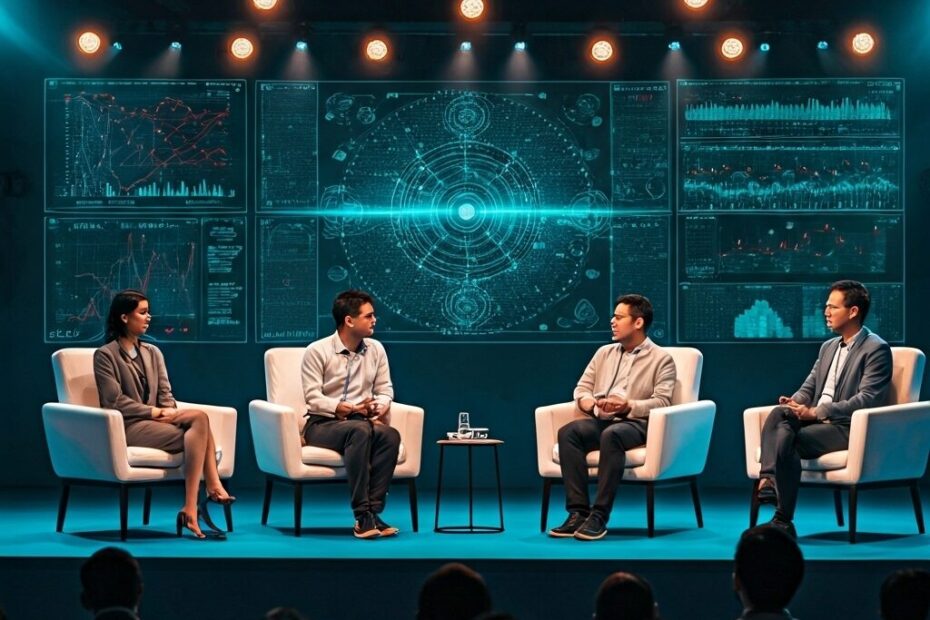Hack Seasons Singapore Panel Explores Tokenization Of RWAs And The Future Of Crypto
John: Hey everyone, I’m John, your go-to tech blogger at Blockchain Bulletin, where I break down Web3, metaverse, and blockchain topics into easy-to-follow reads. Today, we’re diving into the recent Hack Seasons Singapore panel on tokenization of real-world assets—often called RWAs—and what it means for the future of cryptocurrency, based on fresh insights from the event held in early October 2025. If you’d like a simple starter guide to exchanges, take a look at this beginner-friendly overview.
Lila: That sounds exciting, John—I’ve heard a lot about tokenization lately, but I’m not sure how it ties into everyday assets or crypto’s next steps. Can you start by explaining what this panel was all about?
What is Hack Seasons Singapore?
John: Hack Seasons Singapore is a conference that brings together experts in blockchain, AI, and decentralized finance, or DeFi for short (that’s finance without traditional banks, powered by smart contracts on blockchains). The event happened on 2025-10-02 to 2025-10-03 in Singapore, focusing on Web3 innovations. This particular panel explored how tokenizing RWAs could shape crypto’s future, drawing from discussions reported by Metaverse Post.
Lila: Got it—so it’s like a big meetup for tech folks. What exactly are RWAs, and why tokenize them?
Basics of Tokenization and RWAs
John: RWAs stand for real-world assets, which are things like real estate, art, or commodities that exist outside the digital world. Tokenization means turning these into digital tokens on a blockchain, making them easier to trade or divide. For example, instead of buying a whole property, you could own a tokenized fraction of it.
Lila: That makes sense—like slicing up a pie into shareable pieces. How does this connect to cryptocurrency?
John: In the past, crypto was mostly about digital coins like Bitcoin, but now tokenization bridges it to traditional finance, or TradFi (that’s banks and stock markets). The panel highlighted how this can increase liquidity—meaning assets sell faster—and open DeFi to more people.
Key Insights from the Panel
John: Experts at the panel, including voices from projects like IOTA and Akindo, discussed real examples. They noted that tokenizing RWAs could unlock up to $16 trillion in value by improving access and reducing costs, as shared in a post on X from Mpost Media Group dated 2025-09-29. Currently, this is gaining traction in places like Singapore, where regulators are exploring blockchain for assets.
Lila: Wow, $16 trillion is a huge number. What specific benefits did they mention?
John: Here are a few key ones they pointed out:
- Enhanced liquidity: Tokens let you trade assets 24/7 without middlemen.
- Bridging DeFi and TradFi: It allows traditional investors to dip into crypto safely.
- Global access: People in underserved areas can invest in assets like real estate fractions.
- Transparency: Blockchain records make everything verifiable and reduce fraud.
Lila: Those sound practical. Were there any examples from the event?
John: Yes, panelists talked about projects tokenizing things like bonds or commodities. For instance, Singapore’s regulatory body has been testing blockchain for central bank digital currencies, as mentioned in a 2023 Polygon post on X, showing ongoing interest in RWAs.
Challenges and Safeguards
John: While exciting, the panel addressed hurdles. In the past, usability issues like complex wallets slowed adoption, and currently, security concerns and education gaps remain, as noted in Metaverse Post articles from 2025-10-10. Compliance varies by jurisdiction, so always check official docs from regulators like Singapore’s Monetary Authority.
Lila: Good point—safety first. How can people navigate these risks?
John: Start with trusted platforms and educate yourself. The panel emphasized human oversight in AI-integrated systems to avoid errors, and they recommended starting small with verified tokens.
The Future of Crypto Through Tokenization
John: Looking ahead, the experts predicted tokenization will drive mainstream crypto adoption by 2030, based on trends like AI and decentralized compute discussed at the conference. They see exchanges evolving into all-in-one platforms with stablecoins and DeFi tools, as covered in a Metaverse Post piece from 2025-10-10.
Lila: So, it’s not just hype—real changes are coming. Any tips for beginners interested in this?
John: Absolutely—research projects on official sites, join communities, and remember, this isn’t financial advice. The panel wrapped up by stressing sustainable models for long-term growth.
FAQs from the Discussion
Lila: Readers might have questions like, is tokenization legal everywhere?
John: It depends on the country—Singapore is progressive, but always verify with local laws. Another common one: How do I get started? Look into platforms like those mentioned in the panel, but do your due diligence.
Lila: And what about the role of AI in all this?
John: The conference had panels on AI agents in Web3, noting they can automate tasks but need human checks, as per 2025-10-09 reports.
John: Wrapping this up, the Hack Seasons Singapore panel really spotlighted how tokenizing RWAs could make crypto more accessible and integrated with everyday finance—it’s a step toward broader adoption without the guesswork. Events like this show the industry’s maturity, blending past lessons with current tech. And if you’d like a bit more background on exchanges, you might enjoy this global guide.
Lila: Thanks, John—that clears up a lot! The key takeaway is that tokenization is bridging old and new finance, paving the way for exciting, practical crypto uses.
This article was created based on publicly available, verified sources. References:
- Original Source
- Panelists At Hack Seasons Singapore Discuss Key Drivers For Mainstream Crypto Adoption | Metaverse Post
- Market Cycles, Emerging Trends, And Evolving Strategies: Experts Discuss The Future Of Crypto Exchanges At Hack Seasons Singapore | Metaverse Post
- Top Industry Voices Converge At Hack Seasons Singapore To Discuss Investment, DeFi, AI, And Tokenization Trends | Metaverse Post
